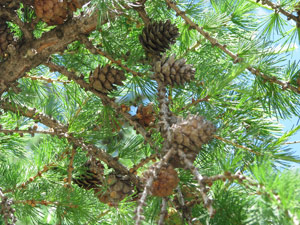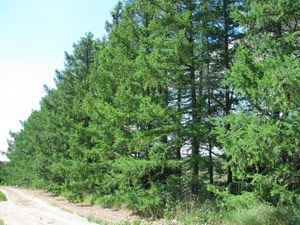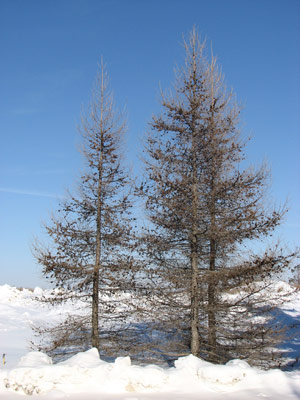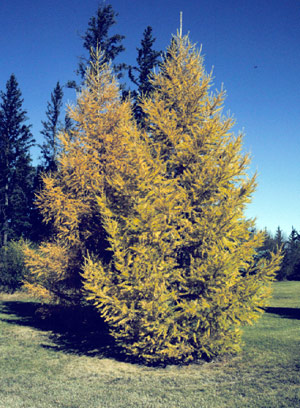Siberian Larch
Larix sibirica
'Lindquist' Siberian Larch
Height: 18 m (60 ft.)
Spread: 4.5 m (15 ft.)
Recommended Spacing: 2.5 m (8 ft.)
Growth Rate: moderate
Lifespan: 50 years+
Note: can be difficult to establish on excessively dry sites; susceptible to larch sawfly and larch spider mite
Origin: introduced from Siberia
Available for all planting types
Siberian larch is a tall slender tree with a straight, tapering trunk and narrow open crown. The seed strain 'Lindquist', developed through the AAFC-PFRA Agroforestry Division's Tree Improvement Program, grows well in a wide range of soil types but prefers well drained, loamy soils. On sites with high water tables, growth of Siberian larch can approach 50 to 75 cm (20 to 30 in.) annually. Larch is tap-rooted and somewhat drought tolerant once established. Its growth will be reduced in dry, light-textured soils; nor does it grow well under shade, preferring full sun. The short, soft needles occur in bundles of 20 to 50. Larch differs from other conifers by shedding its needles: in late fall, its needles turn yellow and are shed before winter sets in.
Siberian larch is recommended to be planted as a middle or inside row of a farmyard or livestock shelterbelt to increase height and provide wind protection. In areas with good soil moisture, it can be planted in single or multiple row field shelterbelts. Siberian larch is also a good choice for wildlife plantings: seeds are eaten by birds and small mammals, and deer browse new growth. Harvested logs make ideal posts due to its decay-resistant nature.



